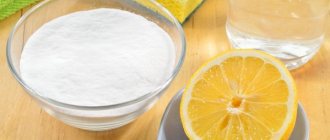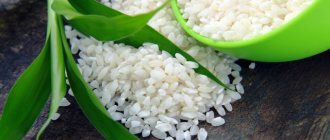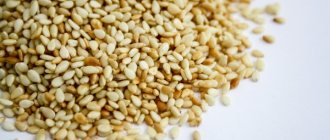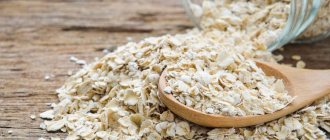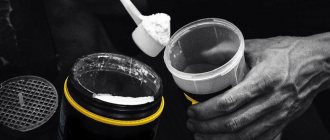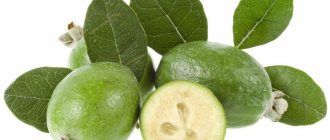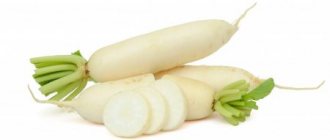The texture of a dish is important, as is the taste. We expect airiness from mousses; we love jelly for its delicate consistency, when the delicacy melts in the mouth. We prefer rich and dense sauce to watery sauce. All these conditions are possible thanks to thickeners. Like the soul of the party, they collect the ingredients into a single whole.
But each group needs its own head. Gelatin, for example, is ideal for making panna cotta, but it can spoil bird's milk. Flour will help thicken the sauce, but pectin will not do any good. He is a star in jam and marmalade.
New heroes are appearing on the gastronomic scene. Take gellan gum, for example. Despite the scary name, which evokes associations with harmful chemical additives, it is a completely harmless natural thickener. Moreover, he shows his unifying abilities even in a cold environment. For comparison: the flour must be heated in order to “turn on” the binding mode.
As you can see, everything needs its own thickener. Let's figure out in what situations and what is better to use.
Jelly with pectin - both tasty and healthy
Well, the question of the benefits of jelly and the need to use it is something that few people ask.
Most people don’t eat it often, because preparing natural jelly with pectin takes time, but few people want to buy store-bought stuff in bags, seeing the long list of all kinds of artificial additives and flavor enhancers. I think that many of you remember how, in childhood, our mothers and grandmothers conjured a small portion of jelly - boiled berries, soaked the gelatin, filtered it and poured it into bowls. In general, the process is labor-intensive, and the output is minimal, eaten in a matter of minutes. We have long been accustomed to the fact that, as a rule, ordinary gelatin is used as a gelling base. Sometimes agar-agar is used, but it is difficult to digest and leads to bowel movements. Much more beneficial is pectin, which is distinguished by its ability to massage and cleanse the intestines of waste products from the body. In addition, it helps remove heavy metal salts from the body.
What conclusions can be drawn from all of the above? Of course, if you prepare jelly, it is better to use pectin for this, combining the taste and benefits of the prepared dish.
Usually, when hearing the word “jelly”, many people have associations with a dish made from fruit juice. But traditional jellied meat is also jelly, only prepared on the basis of animal products. There are also milk, fish and even tea jelly.
We will offer you several recipes for jelly using pectin so that you can get a powerful dose of vitamins, a boost of energy, benefit your body and prepare it in a matter of minutes.
Gelatin
The transparent sticky substance is actually a mixture of animal proteins. Gelatin is obtained by long-term heat treatment of meat and fish by-products: bones, cartilage, joints, skin. It sounds unappetizing, but this thickener gives a tender and smooth texture to frozen foods.
One of the main differences between gelatin treats is their fairly low melting point. Already at 36 °C, strong connections between molecules begin to break down in them, and the dense consistency turns into liquid. This jelly instantly melts in your mouth, revealing all its flavor properties. Due to its neutrality, gelatin does not burden the treat with additional flavor.
This thickener is sensitive to temperature changes. For a dense and strong structure, food must be cooled gradually and for quite a long time so that the correct molecular bonds are formed.
Gelatin is ideal for making jellied meat, jellied meat, marmalade, creamy or fruit jelly. However, you need to be careful with the latter. Fruits such as kiwi, figs, papaya and pineapple contain enzymes in their cells that break down protein, so a gelatin dish with them may simply not harden.
Recipes for jelly with pectin:
1. Redcurrant jelly
- currant berries - 500g,
- sugar – 100g,
- pectin – 25g
- Prepare red currant puree using a blender or mixer.
- Add a little water and cook for 5 minutes.
- Strain the finished compote through a sieve.
- Dilute sugar and pectin in the prepared broth.
- Cook for another 5 minutes, stirring constantly.
- Pour the finished jelly into bowls.
2. Jelly with honey and parsley
Ingredients:
- water – 500ml,
- honey – 500ml,
- apple cider vinegar – 100ml,
- chopped parsley – 10 tbsp.,
- pectin – 80g
- Bring water to a boil and add chopped parsley.
- Leave for 15 minutes.
- Strain the finished broth and pour in honey and vinegar.
- Place on fire and bring to a boil.
- Add pectin and cook for 1 minute.
- Pour into any convenient container and cool.
3. Raspberry jam
- sugar – 2kg,
- raspberries – 2kg,
- butter – 1 tbsp.,
- pectin – 3 tbsp.
- Prepare berry slurry from raspberries.
- Add sugar and pectin.
- Place on low heat and cook, stirring constantly.
- When the jam boils, add butter and simmer over low heat for 5 minutes.
- Pour into jars and close with lids.
4. Sea buckthorn jelly
Ingredients:
- sea buckthorn juice – 500ml,
- sugar – 1.2 kg,
- pectin – 30g
- Squeeze the juice from the sea buckthorn and pour it into the pan.
- Put on fire and add pectin, bring to a boil.
- Add sugar and let simmer for 5 minutes.
- Pour into jars and store in a cool place.
5. Plum jam
- plums – 1.5 kg pitted,
- lemon juice – 1 tsp,
- sugar – 1.5 kg,
- water – 200ml,
- pectin – 30g.
- Combine plums, water and lemon juice.
- Let it boil and cook for 10 minutes.
- Add sugar and pectin.
- Bring to a boil and cook for 1 minute.
6. Strawberry confiture
Ingredients:
- strawberries – 1kg,
- sugar – 400g,
- water – 150ml,
- lemon juice – 2 tbsp.,
- pectin – 50g
- Mash the strawberries, pour in lemon juice and add sugar.
- Mix everything thoroughly and leave the mixture for 10 minutes.
- Pour water into a saucepan and pour pectin into it. Bring to a boil and cook for 1 minute.
- Pour the finished syrup into the strawberries and cook for another 4 minutes.
As you can see, dear readers of “Live Easy!”, there are a huge number of options for making jelly with pectin. Cook for the health of your family and friends!
Agar-agar
Another powerful thickener, but of plant origin. It is obtained from red algae. If gelatin is introduced into a warm mixture and stirred until dissolved, then agar-agar must be heated to a boil. But it hardens much faster (within an hour or two).
The melting point of agar-agar jelly is twice as high. It is clear that it will not melt in the mouth, but such a product is thermoreversible. That is, it can be heated again and when cooled again it will still take the desired shape. True, all these properties are reflected in the structure. The jelly is not so transparent, elastic and has a special taste.
As a thickener, agar-agar is suitable for porous textures. Mousses, marshmallows, marshmallows - all this is his specialty. It handles airy consistencies more delicately, while gelatin smooths them out too much. The fact is that the basis of the vegetable thickener is carbohydrates, not proteins. When combined, they form a more granular structure.
How to make raspberry jelly with pectin?
All chefs who love to prepare sweet homemade preparations have recently begun to use such a substance as pectin. Don't you know him yet? Then you will be interested here!
All about pectin
“Why do you need pectin at all?” - you ask? And in order to forget about outdated methods of making jam according to grandmother’s recipes, prolonged boiling of berries, loss of the original color and most vitamins! This “magic” food additive will help you quickly thicken fruit and berry syrups, reduce the amount of sugar, reduce the cooking time, and get a chic appearance and excellent consistency of jam! Along with gelatin and agar-agar, pectin is also a gelling agent and can also be used to make jams, preserves and puddings, for example, like this raspberry jelly with pectin.
What is pectin
Pectin is a polysaccharide that is found in the cells of almost any plant. Most of it is found in citrus peels. It is present in significant quantities in apples, oranges, grapefruits, currants, lingonberries, quinces, gooseberries, plums, as well as beets and zucchini. Apricots, oranges, tangerines, blackberries, raspberries, blueberries, pears, as well as cabbage and carrots are foods with a medium pectin content. Even less of it is found in strawberries, cherries, pineapple, grapes, kiwi, pumpkin, and eggplant. This substance is obtained from products where its content is highest, and is used in the culinary (mainly confectionery) industry, as well as in the household.
On packages of yogurt, jam and other sweets sold in stores, pectin is designated as food additive E 440.
Pectin has many valuable properties; it is a thickener, gelling agent, stabilizer, and also a moisture-retaining agent. Its use allows you to get jelly, thick jam, jam, marmalade and marshmallows without adding sugar or using it in smaller quantities than usual. Additionally, the use of pectin allows you to reduce the cooking time of berries and fruits, due to which they retain more vitamins and remain intact and beautiful.
Ingredients for raspberry jelly
- fresh raspberries - 0.5 kg;
- sugar - 250-300 g;
- apple pectin - 25 g;
- citric acid (if the raspberries are sweet/overripe) - 0.5 tsp.
Preparation time: 5 minutes
Cooking time: 40 minutes
Number of servings: 10-15 pcs.
Cuisine of the world: European
Preparation method: Preparation
Nutritional value of 100 grams of prepared raspberry and pectin jam: calorie content - 385 kcal, 2.5 g protein, 0.04 g fat, 86 g carbohydrates
Rules of use:
– pectin must be mixed with a small amount of sugar before use so that it is distributed evenly and does not form lumps; – pectin should be introduced into a mass (liquid or puree) heated to a temperature of approximately 50 degrees; – the mass with pectin must be brought to a boil and immediately removed from the heat.
Is it possible to interchange these three gelling agents?
In some cases this is allowed, but here it is important to take into account the properties of each substance and its proportions relative to the thickened mass. Therefore, I would advise you to use exclusively proven recipes from confectioners you trust, and also carefully read the instructions on the package. And everything will work out!
Might you like these recipes?
Step-by-step recipe for raspberry and pectin jelly
To prepare a very tasty and aromatic jelly from berries with pectin, take the freshest raspberries and apple pectin per 1 kg of berries - at least 20 g of pectin. If you are confident in the quality of your raw materials, you don’t have to wash the raspberries. If you purchased raspberries at the market, be sure to rinse the berries under running water to remove debris or dust, and let the water drain through a sieve or colander.
Cover the raspberries with sugar and let them release their juice.
Raspberries are a very juicy berry with a delicate skin, so the necessary syrup immediately appears in the saucepan.
Place the resulting mass on the fire and simmer for 5-7 minutes until the berries soften.
Place the raspberries in a sieve and rub through the wire rack, leaving all the seeds behind. Let the raspberry puree cool to 45-50 degrees. It is at this temperature that it is recommended to introduce any type of pectin.
Types of pectin: how they differ and which pectin is better
What types of pectin are there and how do they differ? Today, three types of pectin are used in the food industry:
- yellow pectin: this includes pectin made from apples or citrus fruits; this type is most often used for the production of confitures and jams
- thermoreversible pectin NH: used for working with highly acidic ingredients, creating fillings, glazes
- FX58: pectin added to calcium-containing products, including milk marmalades
However, the classification of pectin does not end there. Thus, according to chemical properties, pectin is divided into:
- LM (low esterification, esterification below 50%) - has gelling properties regardless of the acidity coefficient of the products used, but only in the presence of calcium ions. This includes pectin FX58
- HM (highly esterified, esterification above 50%) is the most popular and sought-after pectin, it has gelling properties at high acidity, low pH, and high sugar content. This includes apple and citrus pectins, used for making marshmallows, marshmallows, and marmalades.
- LMA (amidated, low-esterified) – used for the production of fruit, heat-stable fillings, fruit fillings for yoghurts
In addition, pectins are divided according to the time of gel formation, and the main differences are shown in the table:
| Type | Esterification degree | Jelly (gel) formation time | Jelly (gel) formation temperature |
| Quick boarding | 70-76% | 10-15 minutes | 75-85°С |
| Average cage | 70-72% | 15-20 minutes | average |
| Slow landing | 56-68% | 20-25 minutes | 45-60°С |
Which pectin is better? It all depends on what you plan to use the supplement for. Based on the functional qualities described above, you should choose the type of pectin that is most suitable for the production of a particular product.
Beneficial features
Pectin offers a range of health benefits:
- It is a soluble fiber that serves as a breeding ground for beneficial bacteria and is also involved in the removal of harmful substances through the digestive system. Pectins are practically not absorbed by the human digestive system, but work as enterosorbents.
- Pectin cleanses the body of harmful substances without disturbing the bacteriological balance. Due to the ability of pectin substances not to be broken down by stomach enzymes, and also to interact with ions of various metals, they are used as a prophylactic agent for intoxication of the body with heavy metals.
- Reduces cholesterol levels. Research results showed that participants who took 15 grams of apple or citrus pectin with food daily for four weeks had a 7-10% reduction in their bad cholesterol levels. In subsequent experiments, taking 6 grams of citrus pectin daily for three weeks resulted in a 6-7% reduction in LDL cholesterol.
- Protects against colon cancer. Eating a diet rich in fiber, such as pectin, may be key to preventing intestinal tumors, according to research. Scientists studied the effect of pectin on human colon cancer cells and found that it inhibited tumor growth. The researchers concluded that pectin and substances resulting from the breakdown of pectin may protect against colon cancer.
- Helps with diabetes. The good news is that eating foods rich in soluble fiber, particularly pectin, helps normalize blood glucose levels. Soluble fiber slows digestion and delays bowel movements. This helps slow the absorption of carbohydrates from food, which keeps glucose levels stable.
- Promotes weight loss. The soluble fiber in pectin makes you feel full much faster as it absorbs water during the digestion process. Soluble fiber also slows down the absorption of carbohydrates. This helps keep blood glucose levels stable and delays hunger.
- Relieves diarrhea. Pectin increases the viscosity and bulk of stool and thus helps relieve diarrhea. It is used in many medicines to treat diarrhea. Pectin, obtained directly from fruits, supplies nutrients and “good” bacteria to the large intestine and helps repair damaged tissue.
- Good for joints. People with arthritis typically experience joint pain, stiffness, inflammation, and are constantly on the lookout for medications that are not addictive. Pectin, which is naturally found in citrus fruits, bananas, apples and some vegetables, binds to heavy metals and removes them from joints. This is called chelation. Joints become damaged when heavy metals accumulate in them, causing them to become painful and stiff. Removing heavy metals through chelation allows the body to repair itself. Pectin also stimulates the production of synovial fluid, which protects joints and allows them to function properly.
- Prevents gallstones. Some studies have found that pectin can inhibit the formation of gallstones and also effectively dissolve existing ones.
Pectin is available in the form of dietary supplements, which can be bought at the pharmacy, if you are not afraid of purchasing a low-quality product, or you can choose from well-known manufacturers here.
Follow the instructions for using pectin and be careful: excessive use can not only be beneficial, but also cause harm.
Preparations and medicines based on pectin
Products based on pectin have similar indications for use: for poisoning, intestinal disorders, dysbiosis, toxicosis. Pecto - in addition to pectin, the powder contains powdered sugar and citric acid. Daily dose up to 4 g of pectin. One sachet contains 2 g. Citrus pectin - available in capsules. 1 capsule contains 650 ml of pectin. For adults: 2 capsules 1 to 3 times a day. Liquid coal is a powder for preparing a solution for dehydration and poisoning. The composition includes pectin, taurine, inulin, succinic acid. Pepidol was invented more than 20 years ago and successfully copes with poisoning, dysbacteriosis and normalizes metabolism. Carbopect - activated carbon with pectin Kaopectil (Attapulgit) - anti-diarrhea tablets containing pectin. These are just a few products containing pectin, but their list and scope of application are much wider. To lose weight, it is better to prepare liquid pectin at home, because this is the only way to be sure of its composition. 30 minutes before meals, drink half a glass of the resulting juice and the result will not take long to arrive.
Reasons why you should use pectin when making jam
The classic method of making jam, which our grandmothers used, is a lot of sugar and long boiling. It turns out tasty, but not very healthy and takes a lot of energy. Nowadays, more and more housewives use pectin to make preparations for the winter.
What benefits does this provide? Here are 6 reasons why you should use pectin when making jam:
- Speeds up the cooking process. To make jam using the usual method, you need to spend at least 1-2 hours. In this case, you will have to stand at the stove all the time, since the mass is trying to burn or “escape”. With pectin, boiling only takes a few minutes.
- Provides a thick consistency. Traditionally, this is achieved through the evaporation of water. If you add E440, it will absorb the juice and swell. Jam can be prepared to any consistency without tedious cooking; the thickness of the product is easy to adjust.
- Maintains natural color. All natural pigments turn brown during prolonged heat treatment. The taste properties also undergo changes. If you do not boil the mass for a long time, the taste and aroma will remain close to fresh fruits.
- Saves valuable substances. If mineral salts do not suffer much from high temperatures, then for many vitamins boiling means destruction. The first to “go away” is ascorbic acid, which is so necessary for immunity in winter. Short-term heating minimizes the loss of beneficial compounds in berries and fruits.
- Reduces the amount of sugar. Due to the fact that the polysaccharide binds water and gives the jam a thick consistency, the amount of granulated sugar can be halved and you can even make jam with pectin without sugar. Therefore, diabetics and those who are on a diet and monitor their health should take note of this natural thickener.
- Makes jam more useful. In addition to reducing the dosage of sugar, saving vitamins and minerals, adding pectin enriches the preservation with dietary fiber. This complex carbohydrate is healthy in itself, and by reducing the amount of sugar, the calorie content of the preparations is also reduced.
The E440 additive does not have its own taste; it does not add any unpleasant flavors to food. It is recognized as completely harmless, so jam with a thickener can be safely given to children.
Coffee milk jelly
- Pour 30 g of gelatin with water (200 ml).
- Take 500 ml of water and add four teaspoons of instant coffee.
- Add sugar (80 g).
- Add gelatin (half) to the coffee, which should dissolve.
- Boil 500 ml of milk, add sugar (70 g), remove from heat.
- The milk has already warmed up, add the rest of the gelatin.
- We prepare the glasses, pour the coffee. The layer can be from one to two centimeters.
- Place in the refrigerator until the mixture hardens. Forty minutes is enough.
- Pour the same amount of milk on top of the frozen coffee jelly. Put it back in the refrigerator.
